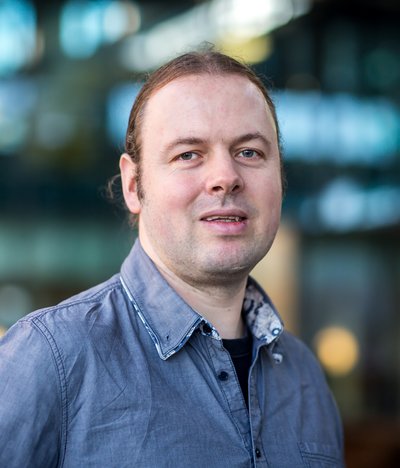Rudie Kunnen
Department / Institute

RESEARCH PROFILE
Rudie Kunnen is an Associate Professor in the Department of Applied Physics at Eindhoven University of Technology (TU/e). His areas of expertise include (geophysical) fluid mechanics, turbulence, experimental techniques involving flow measurement, computational fluid dynamics and convective heat transfer.
Rudie’s research mainly focuses on two fields of turbulence. He studies turbulent convective flows and the effects of system rotation. He uses optical diagnostics, such as (stereo-)PIV and 3D-PTV, and direct numerical simulations. His other main topic of interest is the motion of tiny heavy particles in turbulence. Here, he also applies a combination of experiments (3D-PTV) and direct numerical simulations using modeled particles.
In the project TROCONVEX – Turbulent rotating convection to the extreme – a combination of lab experiments and computer simulations help Rudie and his group gain fundamental insights into the flow and transport of heat, which will then help create an understanding of the flows in the Earth’s inner core as well as in stars and other planets.
The beauty of fluid flow inspires me to work on fluid mechanics problems, from applications in our daily life to our environment.
ACADEMIC BACKGROUND
Rudie Kunnen received his PhD (cum laude) from TU/e as a FOM (Fundamental Research on Matter) student for his work on Turbulent Rotating Convection. He also holds an MSc in Applied Physics from TU/e. After obtaining his PhD, he worked as a postdoctoral researcher at RWTH Aachen University, researching droplet collisions in turbulent air.
Rudie has received the Young Scientist Prize at the EUROMECH European Turbulence Conference in Portugal for the best talk. He regularly contributes to key journals such as Physical Review Letters, Journal of Fluid Mechanics, Physical Review Fluids, Physical Review E and Physics of Fluids.
In 2015 he was awarded a prestigious ERC Starting Grant on the effects of rotation on convective flow, a topic highly relevant for our understanding of many geophysical and astrophysical flows.
Recent Publications
-
Xander M. de Wit,Rudie P.J. Kunnen,Herman J.H. Clercx,Federico Toschi
Efficient point-based simulation of four-way coupled particles in turbulence at high number density
Physical Review E (2024) -
Xander M. de Wit,Matteo Madonia,Andrés J. Aguirre Guzmán,Rudie P.J. Kunnen
Robust wall modes and their interplay with bulk turbulence in confined rotating Rayleigh-Bénard convection
Physical Review Fluids (2023) -
Calum Ryan,Nils Dose,Jan Benedikt,Rudie P.J. Kunnen,Anton A. Darhuber,Hanneke Gelderblom,Ana Sobota
Atmospheric Plasmas Induce Electrolytic-Like Flows In Grounded Solutions
(2023) -
Calum Ryan,Nils Dose,Jan Benedikt,Rudie P.J. Kunnen,Anton A. Darhuber,Hanneke Gelderblom,Ana Sobota
The Effect of Electro-Hydrodynamics on Induced Liquid Flows During Plasma Impingement
(2023) -
Matteo Madonia,Andrés J. Aguirre Guzmán,Herman J.H. Clercx,Rudie P.J. Kunnen
Reynolds number scaling and energy spectra in geostrophic convection
Journal of Fluid Mechanics (2023)
Current Educational Activities
Ancillary Activities
No ancillary activities